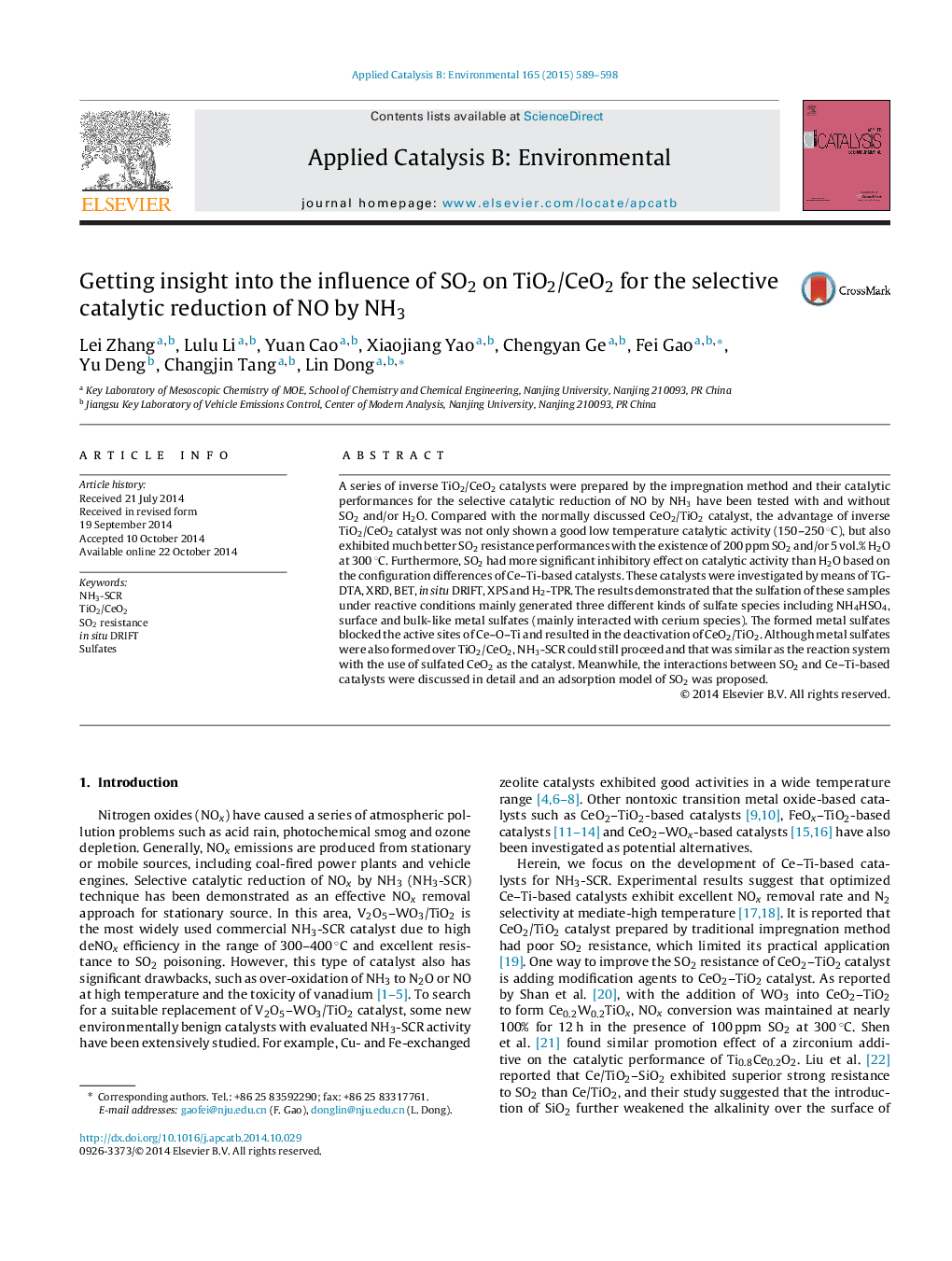| Article ID | Journal | Published Year | Pages | File Type |
|---|---|---|---|---|
| 45591 | Applied Catalysis B: Environmental | 2015 | 10 Pages |
•Inverse Ti/CeO2 samples are prepared for NH3-SCR.•Ti/CeO2 exhibits better resistance to SO2 poisoning than Ce/TiO2 in the presence of 200 ppm SO2 at 300 °C in NH3-SCR.•SO2 has more significant inhibitory effect on deNOx activity based on the configuration differences of Ce–Ti-based catalysts.•The adsorption models of SO2 are proposed to explain the differences of SO2 resistance between Ce/TiO2 and Ti/CeO2.
A series of inverse TiO2/CeO2 catalysts were prepared by the impregnation method and their catalytic performances for the selective catalytic reduction of NO by NH3 have been tested with and without SO2 and/or H2O. Compared with the normally discussed CeO2/TiO2 catalyst, the advantage of inverse TiO2/CeO2 catalyst was not only shown a good low temperature catalytic activity (150–250 °C), but also exhibited much better SO2 resistance performances with the existence of 200 ppm SO2 and/or 5 vol.% H2O at 300 °C. Furthermore, SO2 had more significant inhibitory effect on catalytic activity than H2O based on the configuration differences of Ce–Ti-based catalysts. These catalysts were investigated by means of TG-DTA, XRD, BET, in situ DRIFT, XPS and H2-TPR. The results demonstrated that the sulfation of these samples under reactive conditions mainly generated three different kinds of sulfate species including NH4HSO4, surface and bulk-like metal sulfates (mainly interacted with cerium species). The formed metal sulfates blocked the active sites of Ce–O–Ti and resulted in the deactivation of CeO2/TiO2. Although metal sulfates were also formed over TiO2/CeO2, NH3-SCR could still proceed and that was similar as the reaction system with the use of sulfated CeO2 as the catalyst. Meanwhile, the interactions between SO2 and Ce–Ti-based catalysts were discussed in detail and an adsorption model of SO2 was proposed.
Graphical abstractFigure optionsDownload full-size imageDownload as PowerPoint slide
